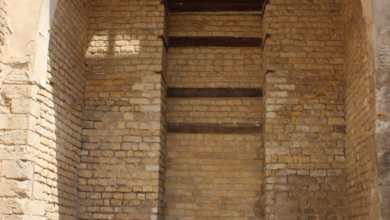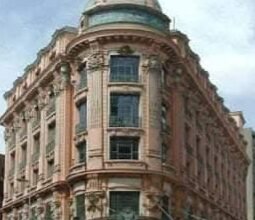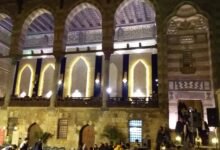العالم الآثاري المصري الدكتور محمد شبانة يكتب: ” جينغدتشن ” معقل صناعة الخزف في الصين والعالم
سلسلة رحلتي إلى الصين ( ٧ )
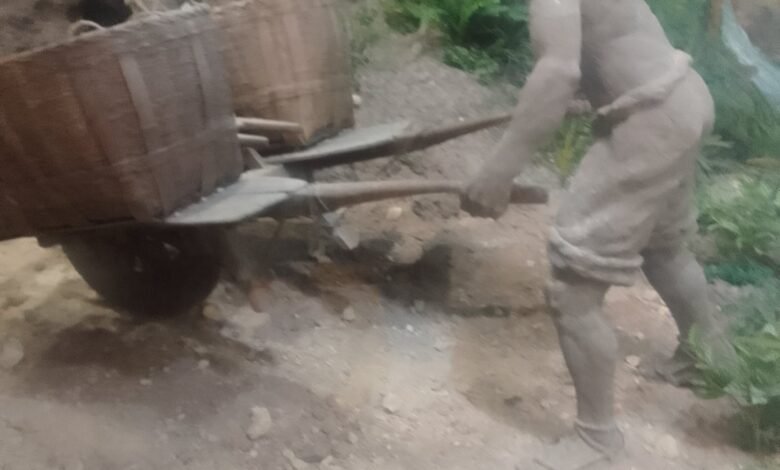
تُعد جينغدتشن الواقعة في مقاطعة جيانغشي جنوب شرق الصين، العاصمة التاريخية لصناعة الخزف الصيني منذ أكثر من 1000 عام, وقد اكتسبت شهرتها العالمية في عهد أسرة سونغ، وبلغت ذروتها خلال عهدي مينغ وتشينغ حين أصبحت مركزًا لإنتاج الخزف الإمبراطوري
كان خزف جينغدتشن يُصدر إلى آسيا والشرق الأوسط وأوروبا، حتى لُقّبت بـ”عاصمة الخزف في العالم”.
تتميّز منتجاتها بالنقاء العالي للبورسلين، وبالزخارف الدقيقة، خاصة الخزف الأبيض والأزرق ذي الشهرة العالمية هذا ويُعرف خزفها بقوته وخفته ولونه اللامع الناتج عن تقنيات حرق متقدمة ومواد طبيعية محلية فريدة, تضم المدينة اليوم متاحف ومراكز فنية ومدارس حرفية تُحافظ على هذا التراث وتطوّره بروح معاصرة, في الحقيقة جينغدتشن لا تمثل فقط تقليدًا صناعيًا، بل أيضًا هوية فنية وثقافية عميقة في تاريخ الصين.
معهد أفران جينغدتشن الإمبراطورية: عندما يلتقي التراث الصيني الخزفي بالتكنولوجيا الحديثة:
في قلب مدينة جينغدتشن، التي عُرفت عبر القرون بـ”عاصمة الخزف الصينية”، يتربع معهد أفران جينغدتشن الإمبراطورية كواحد من أبرز المؤسسات المتخصصة في صناعة الخزف التقليدي وصيانته وترميمه. وُلد هذا المعهد من الحاجة إلى حماية تراث فني فريد نشأ في العصور الإمبراطورية، وتحديدًا خلال أسرتي مينغ وتشينغ، حين كانت جينغدتشن مركزًا رئيسيًا لإنتاج الخزف الفاخر المخصص للقصور الإمبراطورية.
يعمل المعهد على إحياء التقنيات القديمة وتوثيقها عبر الرجوع إلى المخطوطات التاريخية، ويضم في صفوفه حرفيين مهرة وخبراء في المواد وتقنيات الطلاء والحرق والنقش, وهؤلاء المتخصصون لا يكتفون بإعادة إنتاج النماذج النادرة من الخزف، بل يشاركون أيضًا في مشاريع ترميم ضخمة تشمل قطعًا فنية محفوظة في المتاحف الوطنية والدولية.
ويمثل المعهد نموذجًا ناجحًا للدمج بين الأصالة والابتكار، حيث يُعرف بتفوقه في استخدام التكنولوجيا الحديثة لخدمة التراث. فقد أدخل تقنيات مثل التصوير ثلاثي الأبعاد والمسح بالليزر والطباعة الخزفية الدقيقة في أعمال التوثيق والترميم. كما يُستخدم الذكاء الاصطناعي لمحاكاة الألوان التقليدية وتكوينات التزجيج بدقة مذهلة، في حين يُوظف الواقع المعزز (AR) لتقديم القطع الأثرية للزوار بطريقة تفاعلية تعزز الفهم والتقدير البصري لها.
وإلى جانب هذه الأدوات، يستفيد المعهد من الطابعات ثلاثية الأبعاد التي تُنتج نماذج خزفية دقيقة تُنفذ لاحقًا يدويًا، ما يُسهم في تقليل الأخطاء وتحسين جودة المنتج. كما يعمل على إنشاء قواعد بيانات ضخمة تُوثّق العناصر الزخرفية توثيقاً تاريخياً، وتربطها بأصولها الفنية والثقافية.
ولأن الخزف ليس مجرد مادة فنية بل رمز ثقافي وواجهة دبلوماسية، فقد استقطب المعهد اهتمامًا عالميًا واسعًا، واستقبل وفودًا من متاحف ومؤسسات ثقافية من مختلف الدول. ومن بين أبرز الزائرين كان الرئيس الأمريكي دونالد ترامب، الذي أبدى إعجابه الشديد بجودة ودقة الأعمال الخزفية، وتلقى هدية رمزية من الخزف منقوشة بزخارف تمزج بين الرمزية الصينية والدبلوماسية الدولية.
لا يقتصر دور المعهد على الترميم والتوثيق فقط، بل يمتد إلى تنظيم ورش العمل الدولية والمعارض والمهرجانات السنوية، ما يجعله مركزًا نشطًا لنقل المهارات وتعزيز التبادل الثقافي في مجال الفنون الخزفية.
وبذلك، يُجسّد معهد أفران جينغدتشن الإمبراطورية لقاءً مثاليًا بين مجد الماضي وإبداع الحاضر، ليبقى شاهدًا حيًا على استمرارية الفن الصيني الأصيل في وجه التغيرات، ومنارة حضارية تُقدّم الخزف للعالم كجسر فني وروحي بين الحضارات. (يُتبع)
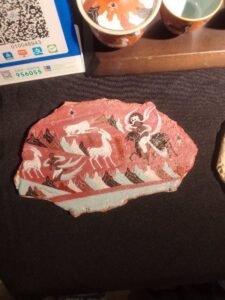
“My Journey to China Series: Introduction: Jingdezhen The bastion of porcelain production in China and the world” (7) by Dr. Mohamed Shabana, Egyptian Archaeologist.
Jingdezhen, located in Jiangxi Province in southeastern China, has been the historic capital of Chinese porcelain for over 1,000 years.
It gained worldwide fame during the Song Dynasty and reached its peak under the Ming and Qing dynasties as the main center of imperial porcelain production.
Jingdezhen ceramics were exported across Asia, the Middle East, and Europe, earning it the title “Porcelain Capital of the World.”
Its products are known for their high-quality clay, refined craftsmanship, and especially the world-famous blue-and-white porcelain.
Jingdezhen ware is admired for its strength, lightness, and glossy finish, made possible by advanced firing techniques and unique local materials.
Today, the city is home to museums, art centers, and craft schools that preserve and develop this legacy in a modern context.
Jingdezhen represents not only a craft tradition but also a profound artistic and cultural identity in Chinese history.
Jingdezhen Imperial Kiln Institute: Where Chinese Ceramic Heritage Meets Modern Technology:
In the heart of Jingdezhen, long hailed as the “Porcelain Capital of China,” stands the Jingdezhen Imperial Kiln Institute—one of the most distinguished institutions dedicated to traditional ceramic production, restoration, and preservation. This institute was born out of a need to safeguard a unique artistic legacy that flourished during China’s imperial eras, particularly under the Ming and Qing dynasties, when Jingdezhen was the epicenter of imperial porcelain craftsmanship.
The institute is committed to reviving ancient techniques, drawing from historical manuscripts and craft records. It brings together highly skilled artisans and experts in materials, glaze chemistry, firing methods, and intricate decorative processes. These specialists not only recreate rare porcelain pieces but also contribute to major restoration projects for artifacts housed in national and international museums.
What sets the institute apart is its pioneering integration of modern technology with traditional craftsmanship. Tools such as 3D scanning, laser mapping, and precision ceramic printing are used in documentation and restoration efforts. Artificial intelligence is employed to simulate historical glaze formulas and color profiles with remarkable accuracy, while augmented reality (AR) offers visitors interactive, immersive experiences that deepen their understanding and appreciation of the art.
In addition, 3D printing is utilized to create precise ceramic prototypes, which are then refined by hand—enhancing accuracy and minimizing material waste. The institute is also developing massive digital databases that catalog historical decorative patterns and trace them back to their artistic and cultural origins.
Beyond its technical achievements, the institute has emerged as a key player in cultural diplomacy, drawing international attention and welcoming delegations from museums and cultural organizations worldwide. One of its most high-profile guests was U.S. President Donald Trump, who expressed great admiration for the craftsmanship and received a symbolic porcelain gift engraved with both Chinese and diplomatic motifs.
The institute doesn’t limit itself to preservation—it actively organizes international workshops, exhibitions, and annual festivals, serving as a vibrant hub for skill transmission and cultural exchange in the field of ceramics.
In this way, the Jingdezhen Imperial Kiln Institute stands as a model of harmony between the glory of the past and the innovation of the present. It is a living testament to the resilience of Chinese artistic identity, presenting porcelain not only as a material art but as a cultural bridge between civilizations…. To be continued


